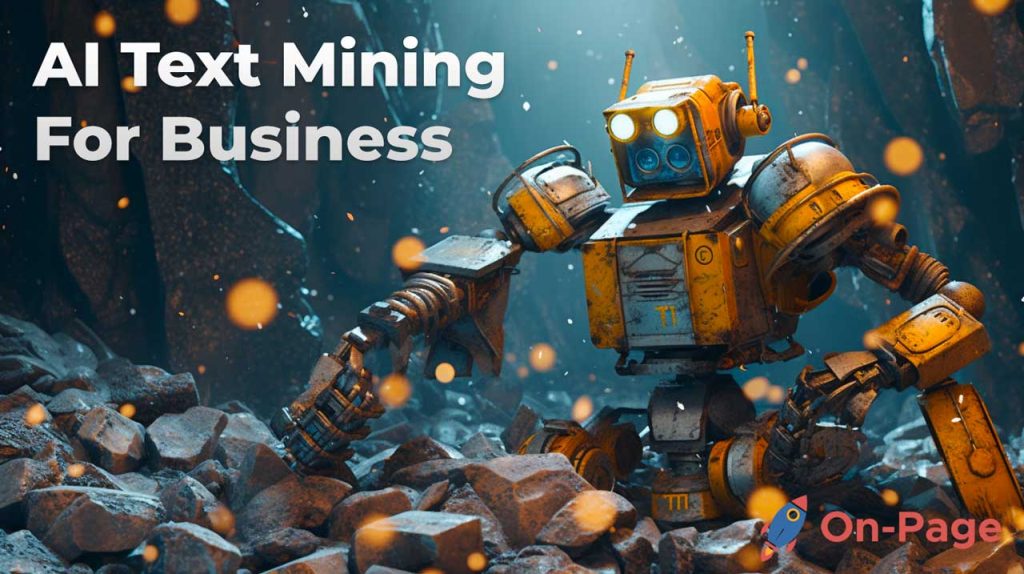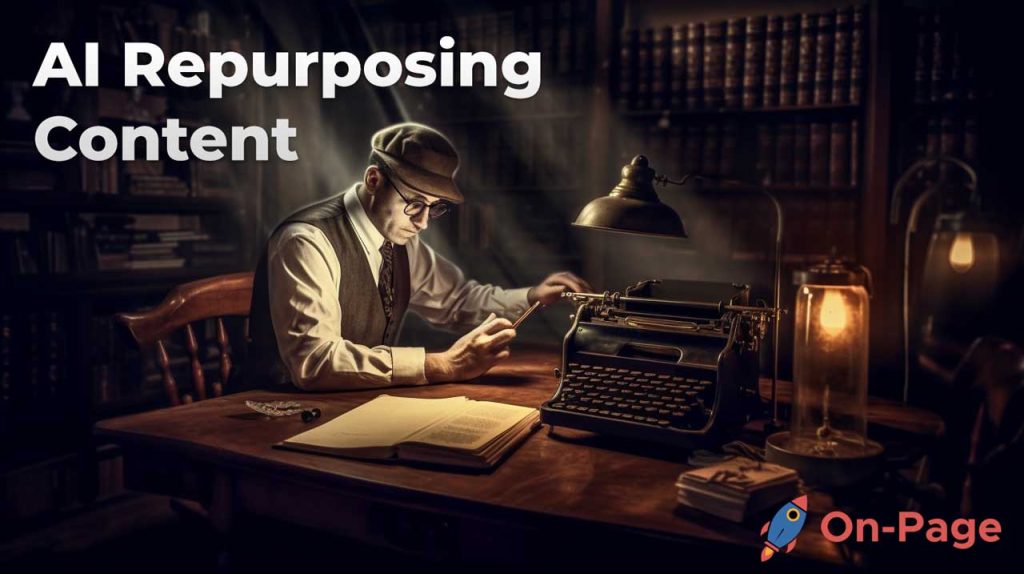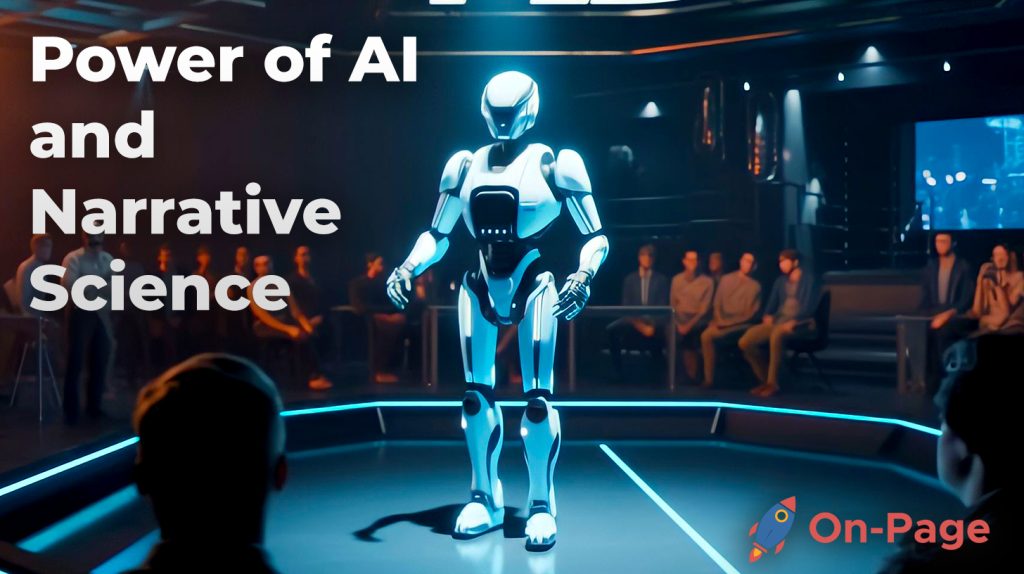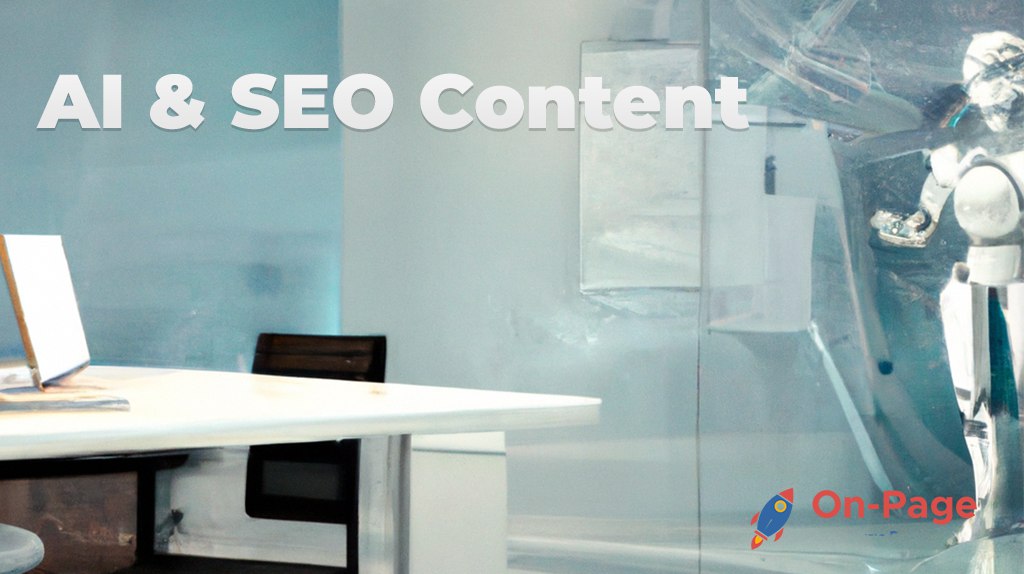Picture yourself trying to hire the perfect writer: someone who crafts spellbinding content, never misses a deadline, and effortlessly optimizes your online presence. Now, imagine this seemingly mythical scribe is not human, but rather powered by artificial intelligence. Welcome to the future of AI copywriting, where machines blend creativity with data-driven precision to transform the writing industry as we know it — making your search for that perfect writer more than just a pipe dream.
In this blog post, we’ll take you on a journey through the cutting-edge landscape of AI copywriting and show you how embracing technology might turn out to be the best decision you ever made for your business.
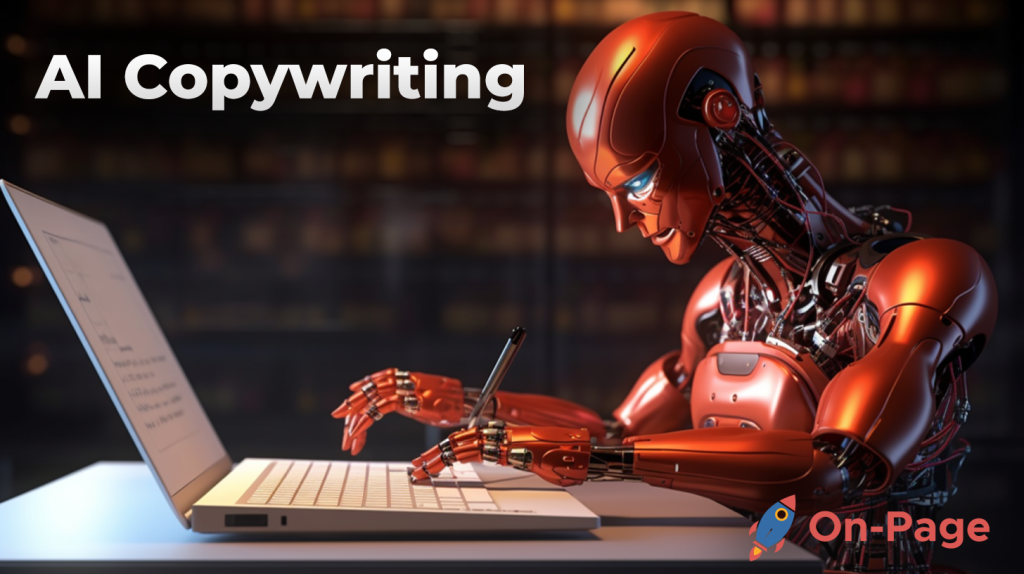
AI is being used in copywriting to analyze existing content on the web and generate new content ideas quickly. This includes ad copy, blog posts, and social media content. However, it’s important to remember that AI-generated content still requires editing by humans to ensure accuracy, relevance, and quality. When used properly and with human writing expertise, AI copywriting can be a powerful tool for boosting productivity and efficiency in the content creation process.
AI Copywriting Explained
AI copywriting is the process of creating written content using machine learning and natural language processing software. These tools use complex algorithms to analyze vast amounts of data and generate written content that is similar to that produced by humans. This technology is rapidly changing the writing industry and has numerous implications for businesses, writers, and marketers alike.
One of the most significant advantages of AI copywriting is its ability to produce high-quality content quickly. In the past, writers had to spend countless hours conducting research and crafting copy from scratch. With AI-powered tools like On-Page.ai, content can be generated in a fraction of the time. These tools can produce more accurate and consistent content than human writers.
Another key advantage of AI copywriting is its ability to optimize content for search engines. By analyzing data from search engines such as Google, these tools can identify keywords and other important factors that contribute to high search engine rankings. This can not only increase visibility but also drive more traffic to websites.

However, one of the limitations of AI copywriting is its inability to take into account cultural nuances or context that might affect the writer’s intent. Humans have a better grasp of subtleties like humor or sarcasm than machines do, which means that relying solely on AI-generated content can sometimes lead to misinterpretation or misunderstandings.
Think of AI copywriting as a tool that can help you leverage data to create exceptional content faster than ever before. Just as a painter might use a brush to create a masterpiece instead of their fingers, writers can use AI tools to streamline their workflow and improve their work.
Natural Language Processing and Machine Learning
Natural language processing (NLP) is a branch of artificial intelligence that focuses on analyzing human language. By using computational techniques to understand and manipulate natural language, software programs can identify patterns, extract meaning, and generate written content.
Machine learning (ML) on the other hand is a subset of AI that involves training computers on large datasets in order to identify patterns and make predictions. This technology is used in many different applications, including speech recognition, image classification, and yes, even copywriting.
NLP and ML are essential components of AI copywriting tools because they enable these programs to parse through vast amounts of unstructured data to detect underlying patterns and structures. By analyzing millions of web pages in seconds and identifying common themes, these tools can generate new ideas for writers or even create entire pieces of content on their own.
For example, some AI-powered copywriting tools use natural language generation (NLG) algorithms to automatically write product descriptions or blog posts based on information provided by users. These tools work by analyzing existing data about a product or topic and generating unique content that is tailored to specific keywords or audiences.
However, while NLP and ML are incredibly powerful tools for generating new content, they are not without their limitations. One challenge facing the development of advanced AI copywriting tools is the difficulty of teaching machines to truly understand human language. While machine learning algorithms are excellent at detecting repetitive patterns or common themes, they struggle with tasks that require a human-level understanding of subtleties like tone or context.
Think of NLP and ML as the building blocks upon which AI copywriting is built. Just as a painter needs brushes, paints, and canvases to create a work of art, AI copywriting tools rely on NLP and ML to interpret human language and generate written content.
Applications of AI in Copywriting
Artificial intelligence has transformed copywriting by providing efficient, cost-effective, and creative solutions. AI-powered copywriting tools like On-Page.ai can generate high-quality content with minimal input from humans. The following are some applications of AI in copywriting.
Product Descriptions
AI copywriting has made it easier for e-commerce sites to create product descriptions quickly and efficiently. Product descriptions generated using AI often provide useful information about a product’s features and benefits creatively.
Blogging
Blogging is another area where AI can make a significant impact. By identifying trending topics and analyzing online content, AI-powered tools can generate optimized blog post titles that increase click-through rates on search engines. This saves bloggers time and allows them to focus on creating relevant content that engages readers.
Website Content

When it comes to website content creation, organizations need to consider the limitations of AI-generated content carefully. While machines can produce large quantities of text quickly, AI may not have the same depth or nuance as a human writer. Some experts argue that machine-generated content lacks creativity or originality. Nevertheless, AI-powered tools like On-Page.ai offer exciting possibilities for businesses looking to create large amounts of high-quality website content quickly.
Social Media
Social media managers can use AI chatbots with natural language processing to conduct surveys, brainstorm post ideas and generate summaries. Chatbots also allow for the automation of responses at any time of the day, making it easier for brands to maintain a consistent online presence through personalized communication.
Email Marketing
Email marketing is another area where AI-powered tools are useful. Using the Stealth ReWriter on On-Page.ai enables marketers to target their audience more effectively while decreasing constant repeats in messaging.
Caveat on Brand Voice
One limitation of AI in content creation for blogs, social media, or email marketing is that the quality of writing can impersonalize the brand voice if it isn’t carefully monitored. However, AI writers powered by NLP can be programmed to adhere to established brand identity guidelines for conveying tone or personality traits required by brands in written communication with their audience.
Key Points
- According to a Gartner report, by 2025 AI-generated content will be responsible for up to 20% of business content for various writing purposes.
- A 2021 study found that using AI-powered copywriting tools can help increase productivity among content creators by up to 60%, saving them considerable time and effort from manual tasks.
- Research indicates that as of 2023, around 40% of marketing professionals have adopted AI-based copywriting solutions to improve their organizations’ efficiency and quality of communication.
AI has significantly impacted various aspects of digital marketing, including blogging, social media, and email marketing. AI-powered tools have made it easier for social media managers to conduct surveys, brainstorm post ideas, generate summaries, and automate responses. Email marketing can be personalized based on a customer’s history or preference information. Bloggers can streamline their work by gathering relevant information using AI-powered copywriting tools like On-Page.ai’s Stealth Writer.
Ad Copy and A/B Testing

One of the most popular applications of AI copywriting is for ad copy and A/B testing. Advertisements are crucial for businesses as they can draw attention to products or services, leading to increased sales and revenue. But crafting effective ad copy can be difficult, especially if you’re trying to target a specific audience.
This is where AI-powered tools like On-Page.ai come in. With their ability to analyze millions of web pages quickly, they can help content writers generate new content ideas and ad variations that are tailored to specific audiences. AI-generated ads can also save time on writing tasks that may take several hours to complete manually.
One great advantage of using AI for ad copy is the ability to run multiple versions simultaneously through A/B testing. A/B testing involves running two different versions of an advertisement (or any other marketing material) side-by-side to see which performs better. The process might involve testing different headlines, descriptions, images, or calls to action (CTA) in advertisements.
By generating alternate versions of an ad automatically using AI copywriting tools, it becomes easier to conduct A/B tests with more variations without taking too much time or effort. You can run tests on hundreds or even thousands of variables that would otherwise overwhelm human marketers.
For instance, a company could use software such as Google Ads to create dynamic search ads that pull content from their website’s landing pages based on users’ search queries. The generated headlines and descriptions would then be tested against each other using AI-powered predictive modeling algorithms.
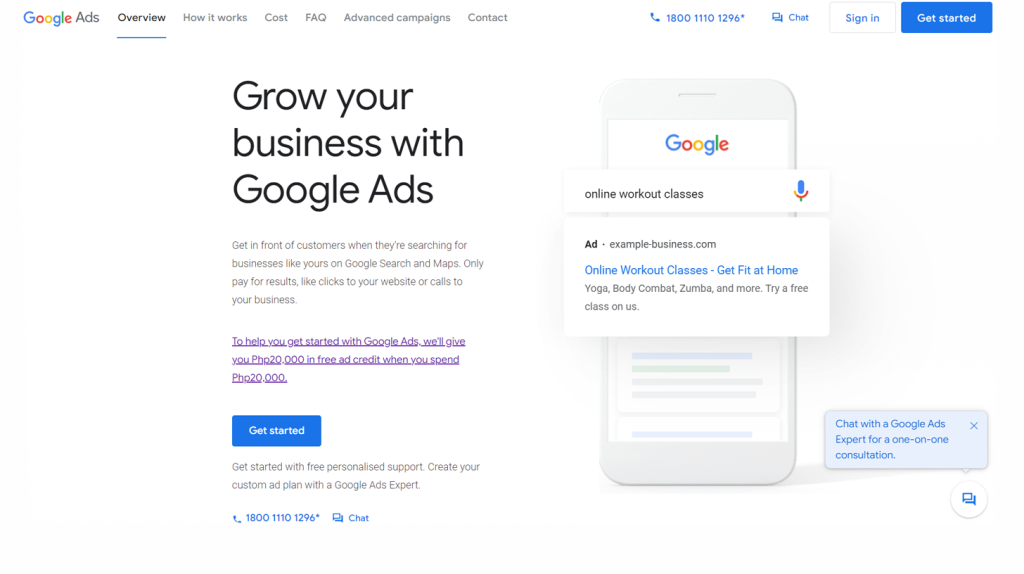
Research has shown that using AI in ad copywriting and A/B testing can significantly improve campaigns’ performance when done correctly. According to Phrasee’s 2021 State of AI in Marketing report, companies that used AI-generated content saw a 28% increase in click-through rate (CTR) compared to those who didn’t use it. Similarly, another study found that AI-generated digital ads outperformed human-written ads by 73%.
However, some critics argue that AI copywriting and A/B testing could lead to a shift toward generic messaging. Marketers must be careful not to create overly predictable ads or ones with no creative flair, which could damage a brand’s reputation and reduce consumer engagement. Another potential downside is that relying too much on AI-generated results can make businesses less responsive to user feedback.
Despite the limitations, the advantages of using AI for ad copy and A/B testing are hard to ignore.
Advantages of Using AI for Copywriting
As we’ve already seen briefly in this article, there are many advantages to using AI-powered tools for various types of writing.
One major advantage is speed. AI algorithms can analyze vast amounts of online content quickly and generate new copy based on these findings. This greatly reduces the time it takes to produce high-quality content and allows writers to focus on other aspects of their marketing campaigns or business operations.
Another advantage is efficiency. While humans may take several hours or days to write compelling copy, an AI algorithm can complete the same task within minutes or even seconds, depending on its complexity. The ability to generate content quickly and efficiently gives businesses a competitive edge in today’s fast-moving marketplaces.
For instance, a clothing brand that has recently released a new line of fashion products wants to run a social media campaign promoting its brand. Instead of hiring an external agency or an in-house team of creatives, they decide to use AI copywriting tools such as WriteSonic or GPT-3 models to create posts for different social media channels.
Research indicates that companies that use AI-powered content generation systems have seen positive results in terms of ROI, engagement rates, CTRs, and conversions. According to a survey by Econsultancy, 55% of businesses using AI-powered content creation tools stated that they saw an increase in engagement rates.
That being said, critics argue that the use of AI copywriting could lead to a decline in creativity, and make writing more formulaic. Some also argue that relying too heavily on AI-generated writing can result in a failure to understand the context or nuances of specific conversations.
However, AI should be seen as an assistive tool rather than a replacement for human creativity. Think of it like a paintbrush — it might make painting easier and more efficient, but you still need an artist’s mindset to create something great. Similarly, AI can help content writers come up with new ideas quickly and effortlessly without replacing their unique way of thinking, writing style, or tone.
Limitations and Responsible Use of AI Copywriting Tools
While AI copywriting can be an excellent tool for content creators to speed up the process of generating content, keep in mind that AI has certain limitations and should always be used responsibly. At its worst, AI-generated content can come across as robotic, impersonal, and irrelevant to readers. Here are some of the limitations and guidelines for using AI copywriting tools.
- First, AI-generated content may not always be 100% original. Some tools work by analyzing existing content on the web and producing new copy based on these findings. This means that there may be instances where the generated content overlaps with existing material or comes close to plagiarism. It’s important to fact-check and run generated content through plagiarism checkers before publishing them online.
- Second, AI-generated content often lacks the creativity and empathy that humans possess. A machine can only synthesize information that it’s given, but it’s not capable of imagining or creating something entirely new from scratch. Content created by humans tends to be more engaging, conversational, and authentic since they understand the different perspectives and emotions of their target audience.
Nonetheless, while human writers are inherently more creative than machines, working alongside an AI writing tool in conjunction with their expertise can create some fascinating results. The ideal use of such a tool is augmented writing. That means involving the solution in generating creative approaches but relying mostly on your ability to tell those brand stories.
In conclusion, it’s vital to find a balance between using AI tools for copywriting and relying solely on them. While these tools can save a considerable amount of time and energy spent on mundane writing tasks, we shouldn’t forget about the value of well-crafted human content. There will still be areas such as thought-leadership pieces and one-of-a-kind brand stories where personal creativity truly shines that AI will struggle to replicate. Hence, these tools can be an excellent starting point, but the finished product should undergo human editing.

Comparing AI copywriting to a painter or musician where art is an expression of their creativity and individuality would suffice. While machines could assemble art pieces with different patterns and colors based on learned patterns and styles, they lack the motivation for why they’re doing it in the first place. Nonetheless, we’ve seen exciting artistic collaborations between artists and AI. We may find hybrid ways that combine AI’s analytical capabilities with human insight and artistic judgment.
It is paramount to deploy the right balance between dependable and honest business practices while using AI-powered solutions like On-Page.ai for copywriting. Explore how the Stealth AI Writer tool can help formulate your next online marketing campaign.
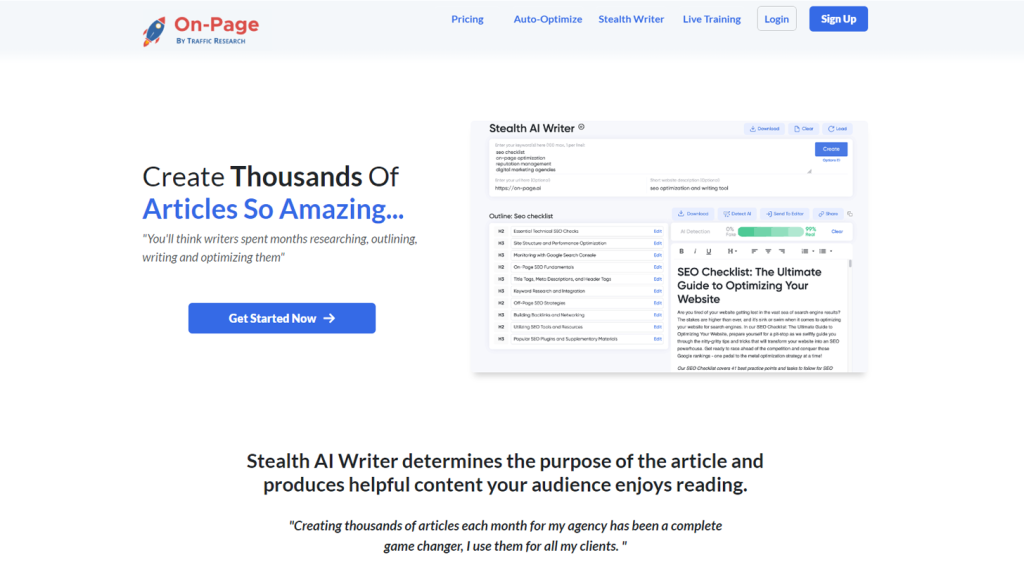
FAQs
1. How can copywriters effectively integrate AI into their work?
To effectively integrate AI into their work, copywriters should first understand the capabilities and limitations of the technology. AI can assist in tasks such as generating headlines, optimizing keywords, and even drafting basic content based on provided parameters. However, it cannot replace human creativity and expertise.
One way copywriters can leverage AI is by using tools that analyze data to provide insights into audience preferences and behavior. This information can then be used to tailor messaging and improve content performance. In fact, studies show that marketers who use AI-powered tools are seeing up to a 20% increase in sales revenue (Forbes).
Another way to integrate AI is to use NLP technology to enhance SEO optimization. By analyzing search queries and content, NLP can generate keyword recommendations and suggest relevant topics for content creation.
Ultimately, while AI can aid in certain aspects of copywriting, it should be viewed as a complement to human expertise rather than a replacement. By understanding how to effectively incorporate AI into their workflow, copywriters can improve efficiency and drive better results for their clients or company.
2. Will AI replace human copywriters in the future?
The question of whether AI will replace human copywriters in the future is a popular one. The truth is, AI-powered writing tools have already made an enormous impact on the industry. With advanced algorithms capable of producing high-quality content, some might predict that human writers could be at risk of being replaced by machines.
However, it’s important to note that there are several areas where AI falls short. For instance, machines lack creativity and empathy — two critical qualities that often make writing compelling and personable. Thus, while AI generates standard templates and formats with impressive speed and accuracy, it can’t replace the nuances of human thought and originality.
Research conducted by the Content Marketing Institute revealed that 55% of companies still prefer using human writers over automated tools to produce their content. This suggests that organizations recognize the importance of quality writing and want to maintain a personal approach in their communication strategies.
Finally, it’s worth noting that as technology evolves, so do human skills. AI has revolutionized the writing industry, but it hasn’t entirely replaced humans’ contributions. Instead, it has introduced new ways for writers to work much more efficiently while still maintaining their creativity and unique skill sets.
In conclusion, AI may represent significant competition for human writers but cannot match them in terms of originality and empathy. Both automated tools and human writers find space in today’s ever-changing market landscape.
3. How will AI change the way we approach content creation and marketing?
AI is already making significant changes to the content creation and marketing industry. With advancements in NLP, ML, and big-data analysis, businesses can now harness AI to produce high-quality content that is both personalized and engaging for their target audience.
One of the most significant ways AI will change content creation is through its ability to automate the repetitive and time-consuming tasks involved in writing. This includes generating headlines, researching topics, and even identifying optimal keywords for SEO purposes. According to a recent study by Market Research Future, the global AI-powered content marketing market is predicted to grow at a compound annual growth rate of 29% from 2018 to 2023.
AI can also be used to analyze data sets and identify patterns in customer behavior, allowing marketers to develop targeted campaigns tailored specifically to the needs and preferences of their audience. By analyzing past consumer interactions with a brand’s website or social media platforms, for example, AI algorithms can predict which types of content are most likely to drive engagement in the future.
It’s clear that AI technology has disrupted many industries, including writing. While some worry that it may eventually replace human writers altogether, we believe that it’s more likely that it will augment their abilities and empower them with new tools. As AI continues to evolve and become more sophisticated, content creators and marketers will need to stay up-to-date with the latest trends and developments in order to remain competitive in an increasingly automated world of work.
4. What challenges does the use of AI in copywriting present?
The use of AI in copywriting presents several challenges. One of the primary concerns is the risk of producing content that lacks creativity and originality, which could result in a negative impact on a brand’s image. According to a survey conducted by Forbes Insights, nearly 60% of marketers believe that keeping up with consumer expectations for personalized experiences is one of their biggest challenges.
Another challenge is the potential for errors or biases in the NLP algorithms used by AI. For example, if an algorithm is trained on biased data sets, it may produce content that perpetuates those biases. There is always a risk of technical glitches that can cause AI-generated content to be factually incorrect or irrelevant, leading to legal and reputational repercussions.
Finally, there is also concern regarding the displacement of human writers in the industry. While AI can generate large volumes of content quickly and cost-effectively, there are certain types of writing (e.g., creative writing) that require human expertise and thought processes. According to a McKinsey report, automation technologies such as AI could displace up to 800 million jobs globally by 2030.
In conclusion, while the use of AI in copywriting enables businesses to streamline their content production process, it comes with its own set of challenges that need to be addressed. To ensure the success of AI-generated content, companies need to strike a balance between efficiency and creativity while also being mindful of potential errors and biases that the technology may introduce.
5. What benefits can AI bring to the field of copywriting?
Artificial intelligence has revolutionized the writing industry, and copywriting has been no exception. The benefits of AI in copywriting are plenty. Here are some of the main benefits that AI can bring to the field of copywriting.
- First, AI technologies can save time and reduce costs for businesses. AI programs can generate high-quality content faster than human writers, which allows companies to produce more content in a shorter amount of time. By using AI, businesses can also cut down on their writing expenses, as they do not need to employ a large number of writers.
- Second, AI tools can improve the accuracy and consistency of content. Using natural language processing, AI programs analyze vast amounts of data and create content with a higher level of precision than humans can achieve. This accuracy ensures that the message is well understood by the target audience.
- Third, AI technologies can provide valuable insights through data analysis. By analyzing user behavior and preferences, AI programs allow businesses to tailor their messaging to effectively reach specific customer segments. Data-driven insights generated by AI can help identify trends and opportunities for growth.
According to recent research, almost 80% of marketers report improved productivity after implementing AI into their content creation process. Furthermore, 90% of respondents reported higher engagement rates with their audience due to personalized messaging generated by AI-powered applications (Uberall).
In conclusion, the implementation of AI in copywriting brings many benefits such as savings in time and cost, improved quality and accuracy of content, as well as data insights that lead to better customer engagement.
Overall, it’s clear that AI-powered tools like On-Page.ai are changing the writing industry for the better by providing powerful tools that streamline processes while improving communication between brands and consumers.

